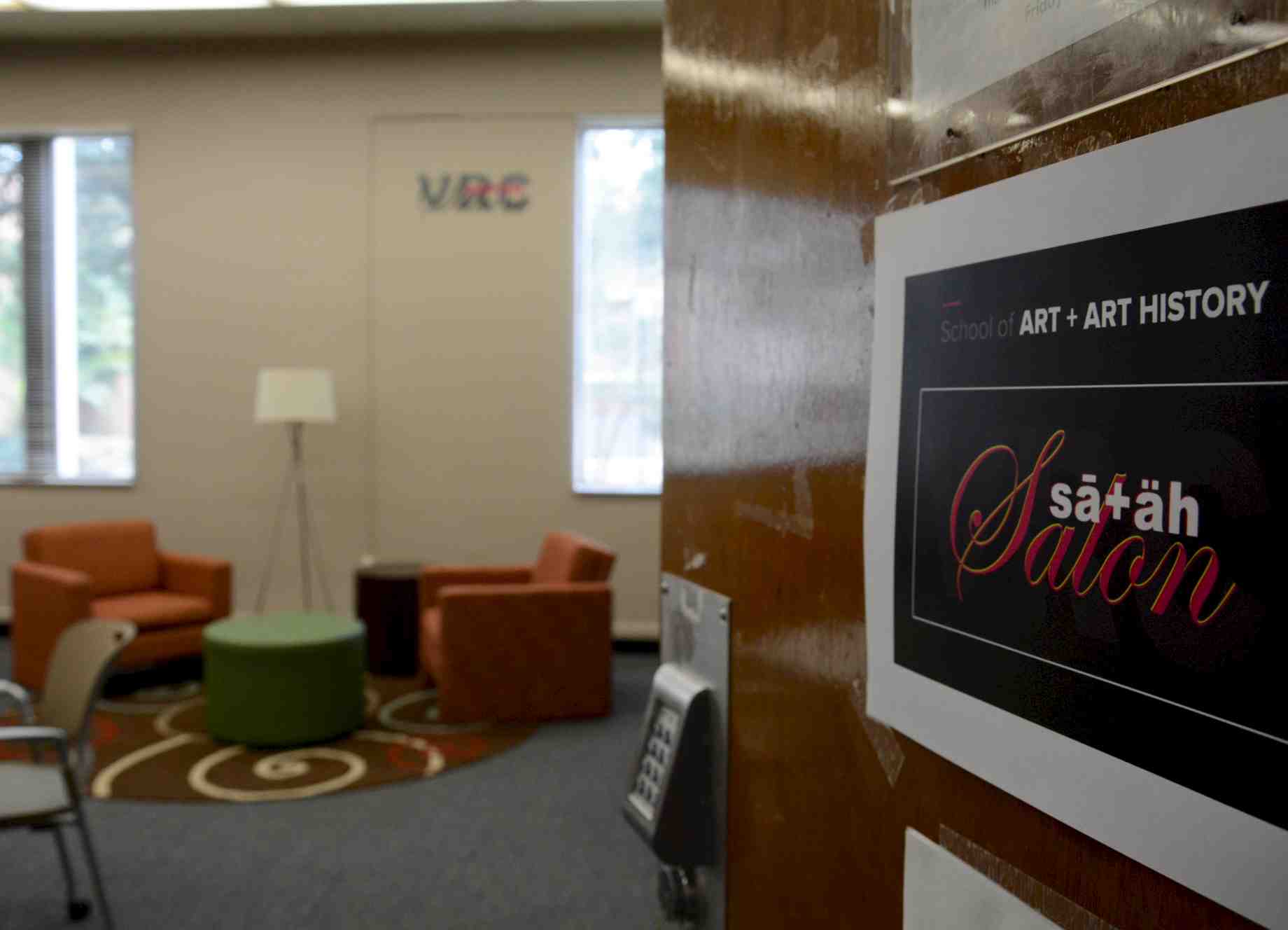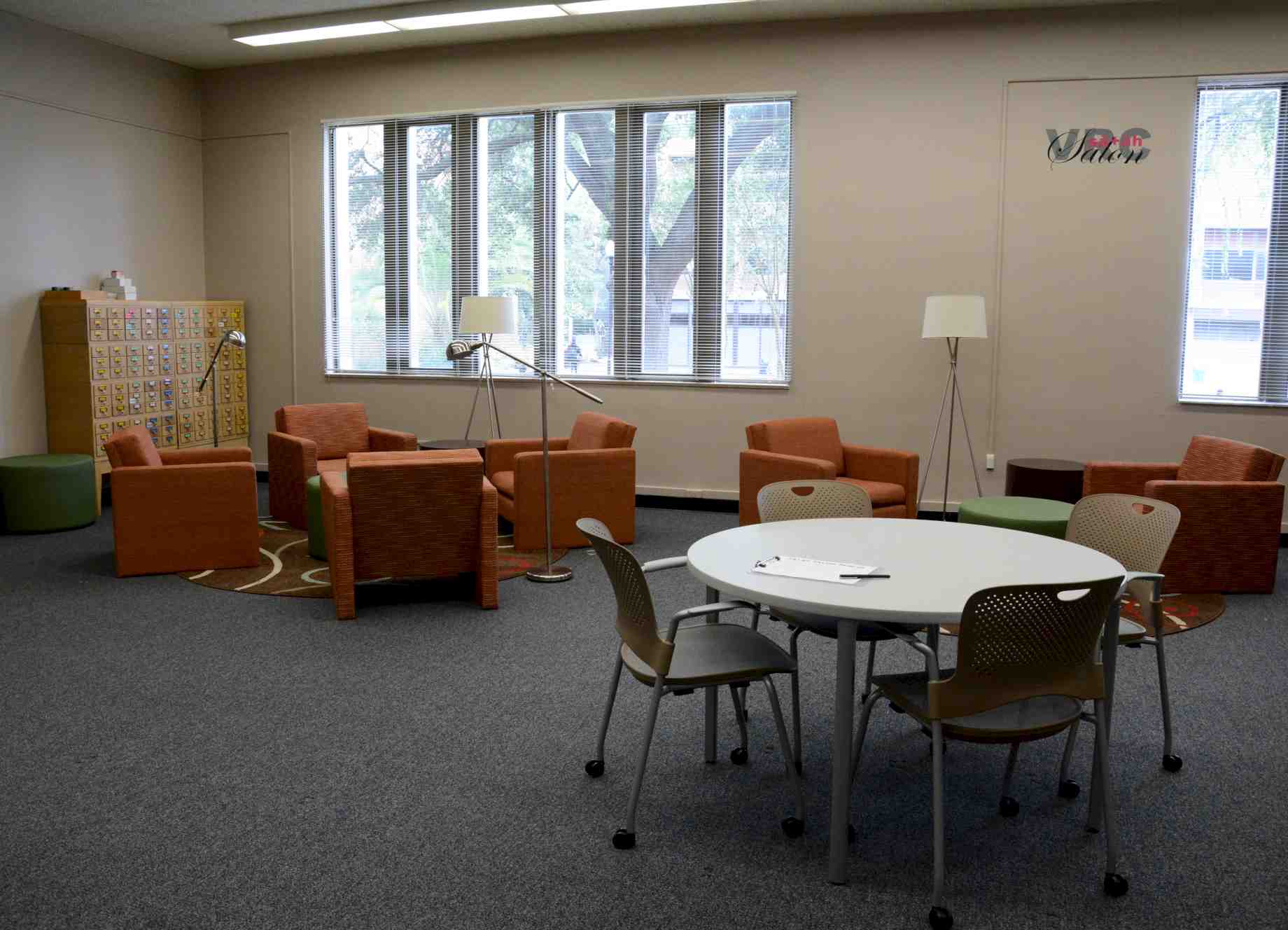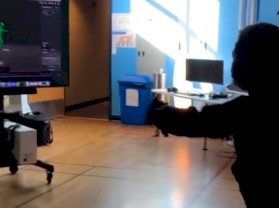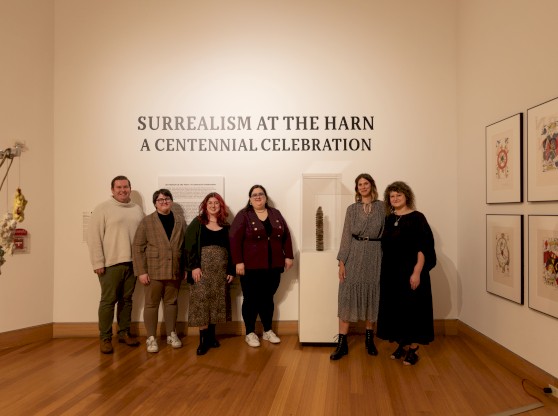After the recognition that both students and faculty felt the need and desire for a more informal collaboration space at the University of Florida School of Art + Art History, one is finally in place.
The new space, called the sā+äh (“say-ah”) Salon, is located in Fine Arts Building C, room 118.
“It is a space I hope both students and faculty will take advantage of,” said Richard Heipp, director of the School of Art + Art History. “They can use it to work together to share ideas, study, interact and relax.”
The interdisciplinary collision space has a variety of uses, and is overall more informal than the traditional classroom setting, Heipp said.
The initiation of the idea was about six years ago during the college’s review by the National Association of Schools of Art and Design. Students and faculty expressed concerns about the fact that there was no space available for collaboration other than classrooms.
Heipp said during this time, spaces like the salon were becoming extremely popularized, which also added to the growing desire. The salon officially opened at the beginning of the fall 2014 semester.
“It was really done on a shoestring budget,” he said. “We received recycled furniture through the union and got pretty much everything else, including the lamps and rugs, on sale.”
The salon is open 24-hours a day for all faculty and graduate students, who can access the room with a code. For undergraduate students, the space is open during normal business hours (Mondays: 9 a.m.-1 p.m.; Tuesdays: 9-11:30 a.m. and 12-5 p.m.; Wednesdays: 11 a.m.-4 p.m.; Thursdays, 9-11:30 a.m. and 12-5 p.m.; and Fridays, 11 a.m.-4 p.m.).
The unique design of the space will allow for a variety of activities, as it features several different seating arrangements. Comfortable couches can be used for relaxing or studying, while small group spaces and the large conferencing table can be used for collaboration or projects. The room also has a 60-inch, wall-mounted monitor, which can be used to help students study in groups or create presentations.
Before the room became the sā+äh Salon, it was the VRC, or Visual Resources Center. It was a place that housed more than 300,000 slides and scanning equipment.
Heipp explained that the room was previously geared toward art history faculty, however when slides became less popularly used, something innovative and new had to be done.
There are currently still three cases of slides, but much more room for new activity and opportunity.
“We wanted to maintain what there was, but add to it to make it even better,” he said. “Now it is a space that students can really use.”




